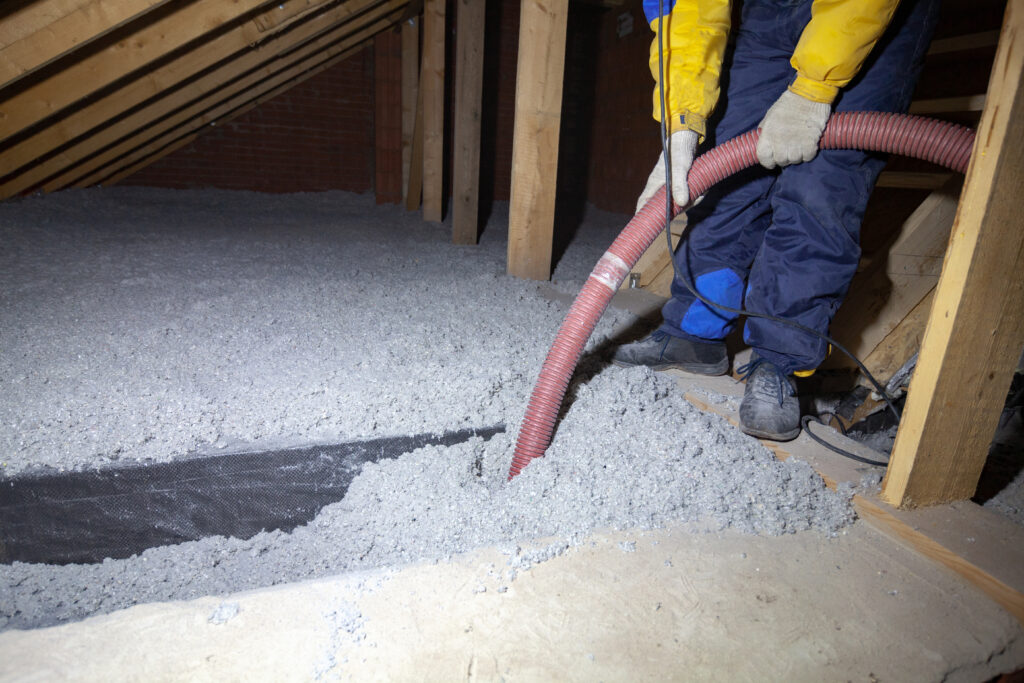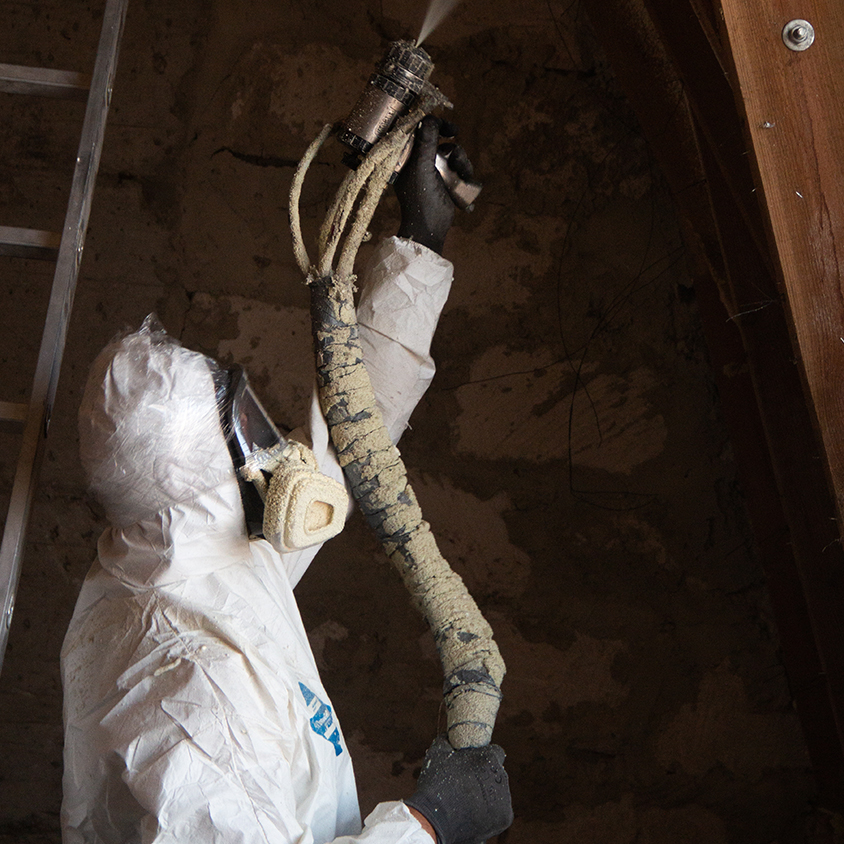Choosing the right insulation is one of the most important decisions a builder can make. The right material in the right build ensures happier clients who can be proud of their choice of builder. The performance, comfort, and energy efficiency of any home depend heavily on the insulation material used.
RM Insulation has been helping builders make the best decisions for their projects for years. Our insulation specialists have been working with cellulose and fiberglass insulation for over two decades. Reach out today to discuss what works best for your home.
Understanding the Basics of Fiberglass and Cellulose Insulation
Before comparing the performance of each, it’s essential to understand what these materials are made of and how they function.
What Is Fiberglass Insulation?
Fiberglass insulation is made from fine glass fibers that are spun into loose-fill or batt forms. It’s lightweight, affordable, and one of the most common insulation materials in the United States. Builders often choose fiberglass for attics, walls, and crawl spaces due to its versatility and widespread availability.
What Is Cellulose Insulation?
Cellulose insulation is made primarily from recycled paper products, usually treated with fire-retardant chemicals like borates. It’s an eco-friendly option that appeals to builders focused on sustainability. Cellulose is typically installed as loose-fill or dense-pack material, filling gaps and voids effectively for consistent coverage.
Comparing Thermal Performance (R-Values)
When builders talk about insulation performance, the conversation usually starts with R-value, a measure of thermal resistance. Higher R-values indicate greater insulating power.
Understanding R-Value per Inch
- Cellulose: R-3.2 to R-3.8 per inch
- Fiberglass: R-2.2 to R-2.7 per inch (loose-fill), R-2.9 to R-3.8 per inch (batts)
In general, cellulose offers slightly higher R-values per inch, meaning it can provide better thermal resistance in the same amount of space.
Real-World Energy Efficiency
While R-value is important, real-world efficiency depends on how well the insulation fills gaps and maintains coverage over time. Cellulose tends to settle into cavities and seal small spaces, reducing air leaks. Fiberglass batts, on the other hand, require precise installation to avoid gaps that can reduce efficiency. In attics and walls where air sealing is critical, cellulose often provides a tighter thermal barrier.
Durability, Fire Safety, and Moisture Resistance
Thermal performance is only one factor. Builders also need to consider how well insulation holds up over time and under different environmental conditions.
Fire Resistance
Fiberglass insulation is naturally non-combustible because it is made from sand and recycled glass, which do not burn or support combustion. It does not require chemical fire retardants to meet fire safety standards and is accepted as a fire block in wood frame construction.
Fiberglass maintains its structure under high heat and does not melt or collapse, but it can soften at very high temperatures. Its non-combustible nature provides reliable fire resistance over the lifespan of the insulation.
Cellulose insulation is made from recycled paper products and is treated with fire retardants, typically boron-based chemicals that become a permanent part of the material. These treatments help cellulose achieve a Class A (Class 1) fire rating, the highest possible for building materials.
In real-world fire tests, cellulose-insulated walls have demonstrated up to 50% better fire resistance than fiberglass assemblies, largely due to its dense structure, which restricts oxygen and forms a protective char layer when exposed to fire. This char layer helps suppress combustion and can provide more evacuation time in the event of a fire.
Moisture and Mold Resistance
Fiberglass resists mold growth as long as it remains dry, but if it becomes wet, it can lose its insulating value until completely dried.
Cellulose can absorb and release moisture slowly, which helps balance humidity in some situations, but prolonged exposure can lead to settling or microbial growth. Proper installation and ventilation are key to avoiding these problems.
Longevity and Maintenance
Fiberglass typically retains its R-value over time and is less likely to settle. It’s also easier to replace or add to later.
Cellulose may settle slightly, especially in attics, but it fills cracks and small voids better, creating a more uniform insulation layer. With professional installation, both materials can perform well for decades.
Cost Comparison: Material and Installation
Pricing can vary by project size, labor costs, and local material availability, but general trends hold true across most regions.
Material Prices (2025 Estimates)
In 2025, fiberglass remains the more budget-friendly option. Loose-fill fiberglass averages about $0.50 to $0.70 per square foot, while cellulose typically ranges from $0.70 to $1.00 per square foot. Builders focusing on initial construction costs often lean toward fiberglass for large-scale projects.
DIY vs Professional Installation Costs
Fiberglass batts can be installed by experienced DIYers, though professionals ensure better coverage and air sealing. Cellulose, especially dense-pack or blown-in applications, requires specialized equipment and training. Builders working with professional installers can expect more consistent results and long-term performance.
Long-Term Cost Efficiency
While cellulose may have higher upfront costs, its tighter air seal can improve energy efficiency, reducing heating and cooling bills over time. Fiberglass remains cost-effective for new builds or remodels where precision installation can be guaranteed.
When to Choose Cellulose vs Fiberglass
Choosing between cellulose and fiberglass depends on the specific needs of the project. There is no one size fits all solution that can be easily determined. But to give you an idea of how both compare we’ve created this handy chart to identify which would serve your purpose better:
| Criteria | Cellulose Insulation | Fiberglass Insulation |
| Material Composition | Recycled paper fibers treated with fire retardants | Fine glass fibers formed into batts or loose-fill |
| R-Value per Inch | R-3.2 to R-3.8 | R-2.2 to R-2.7 (loose-fill), R-2.9 to R-3.8 (batts) |
| Air Sealing Ability | Excellent; fills gaps and small cavities for a tight seal | Moderate; performance depends on installation precision |
| Eco-Friendliness | High; made from up to 85% recycled materials | Moderate; uses abundant but non-recycled resources |
| Fire Resistance | Treated with borates for fire safety | Naturally non-combustible |
| Moisture Resistance | Absorbs and slowly releases moisture; requires proper ventilation | Resists mold when dry; loses effectiveness if wet |
| Durability | May settle slightly over time | Maintains R-value and structure long-term |
| Installation Method | Blown-in or dense-pack; professional installation recommended | Available in batts or loose-fill; suitable for DIY or pro installation |
| Cost (Material + Labor) | Slightly higher initial cost; strong long-term energy savings | Lower upfront cost; excellent for large-scale builds |
| Best Applications | Attics, retrofit projects, and irregular cavities | Wall cavities, new construction, and large developments |
| Ideal Choice For | Builders prioritizing sustainability and air sealing | Builders focused on cost efficiency and moisture control |
Both materials can meet energy efficiency standards when installed properly, but the right choice ultimately depends on climate, budget, and building design. A trusted insulation specialist will be able to help you determine which type of insulation is right for your project.
How RM Insulation Helps Builders Choose the Right Material
Every project is different, and expert guidance ensures insulation performs as intended. RM Insulation works with Dallas and Fort Worth area builders to evaluate goals, budget, and structure type before recommending the best insulation solution.
Whether you’re looking for cellulose insulation installation in Dallas, fiberglass insulation in Fort Worth, or a full range of insulation services, RM Insulation delivers professional results you can rely on.
Contact Our Trusted Insulation Specialists in the Dallas Fort Worth Area
To learn more or schedule a consultation contact us today at (214) 629-2669. We’ll help you make the right decision for your build.


